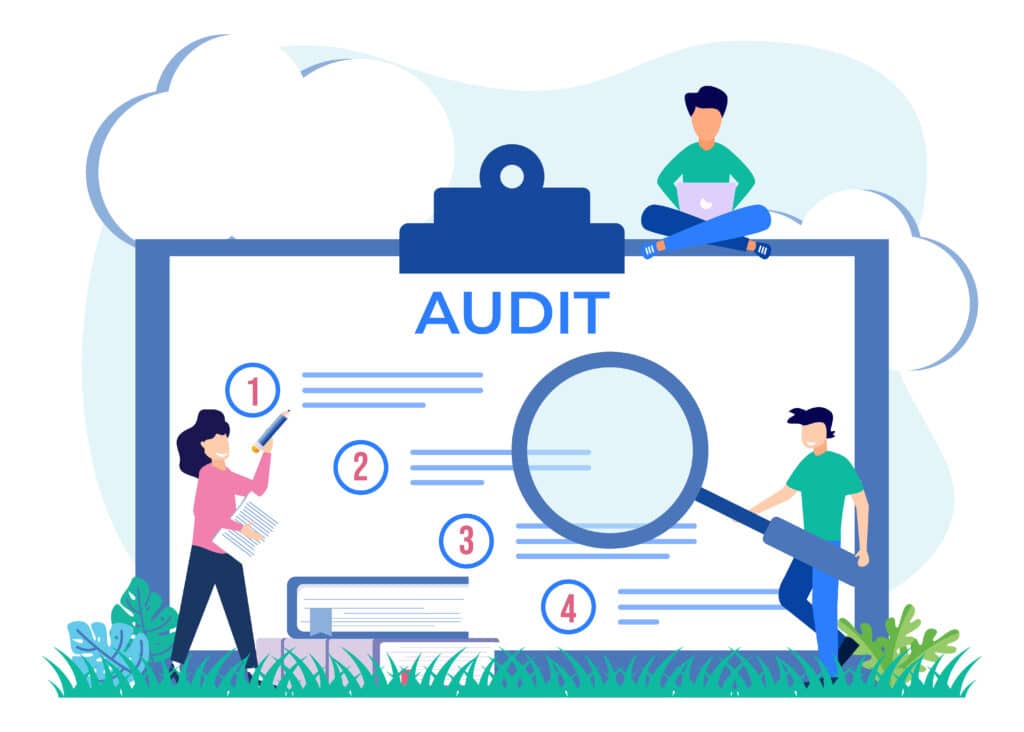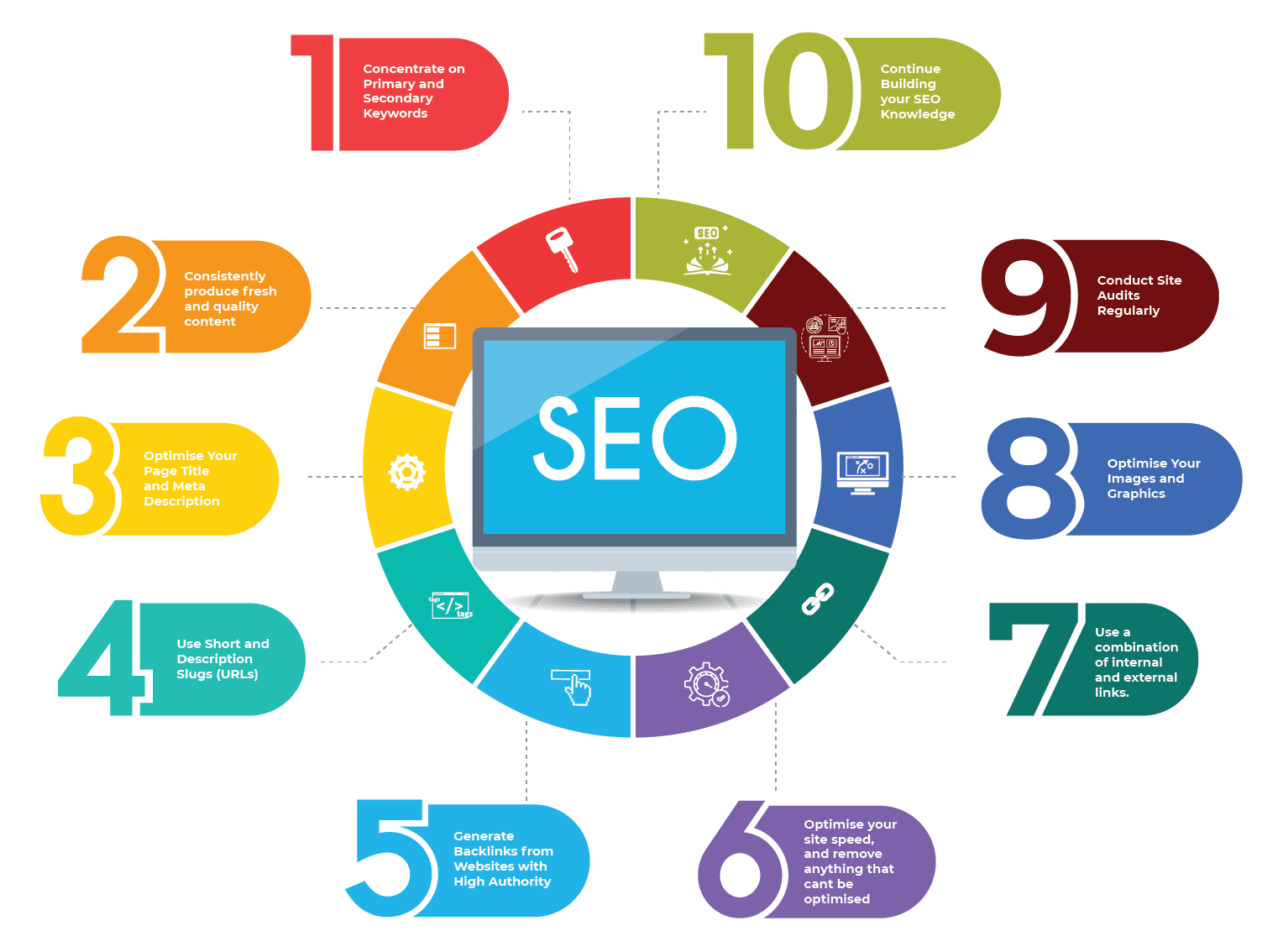SEO significantly influences your company’s online performance, regardless of whether you own a small business or a large corporation. The convenience by which your target clients may discover your SEO approach determines you. That’s no easy feat, given that 75% of people don’t even click through to the second page of Google.
Here are 10 easy SEO ideas and techniques you can use to promote your website and reach potential customers:
1. Concentrate on Primary and Secondary Keywords
Keyword research forms the cornerstone of every effective SEO plan. By understanding how search engines work and identifying relevant keywords, you can create content that attracts more visitors to your website. Your page’s primary and secondary keywords are crucial in optimising your content for search engine visibility.
The primary keyword holds the utmost importance in your content and should be highly relevant to the theme of your page, your brand identification, and the products or services you offer. It serves as a focal point for search engine optimisation efforts.
Supporting keywords, often more specific than the primary, help reinforce the central theme and represent the subtopics you’ll address in your blog post. Integrating these relevant keywords organically into your text is essential for search engine optimisation, but it’s important not to force them if they disrupt the natural flow of your writing. You can strive for seamless incorporation that enhances the user experience while signalling your content’s relevance and value to search engines.
2. Consistently produce fresh and quality content
If you want customers to discover and revisit your website, you need unique, comprehensive, and evergreen content optimised for search engines.
Original content allows you to create a strong relationship with your audience by showcasing your distinct perspective and expertise. Moreover, search engine algorithms, especially those employed by Google, prioritise unique material. Websites that implement robust search engine optimisation strategies and consistently publish trustworthy and original content are more likely to experience an increase in search rankings.
Ideally, your content should be thorough and answer users’ questions about the subject matter. Total pages provide valuable information to your audience and establish you as an authority in the eyes of search engines, further enhancing your visibility and credibility.
Consistently producing fresh and high-quality content is paramount for maintaining a solid online presence. By consistently publishing new content, you signal to search engines that your website is active, authoritative, and relevant to current trends and user interests. Search engines prioritise websites, regularly updating their results with new and relevant information. Additionally, fresh content keeps your audience engaged and encourages repeat visits as they anticipate new insights and valuable updates from your site. Please remember to focus on quality, ensuring your content is well-researched, informative, and well-presented. Quality content attracts and retains visitors and earns backlinks and social shares, further boosting your website’s visibility and credibility in the eyes of both search engines and your target audience.

3. Optimise Your Page Title and Meta Description
Your title tags and meta descriptions attract visitors from search engine results pages (SERPs). They are often the first elements users encounter and can heavily influence their decision to click on your page. Crafting compelling and concise meta descriptions that appear in search engine results is essential for driving click-through rates and improving your visibility in search engine results. The length of your page title should ideally be between 30 and 60 characters, while your meta description should not exceed 160 characters. Including your desired keyword in the meta descriptions enhances its relevance. Additionally, please provide a clear and compelling summary of what your page offers, highlighting its unique qualities. Remember, each page should have a unique and optimised title and meta description to maximise their effectiveness in search engine results pages.
Here are a few pointers to keep in mind:
- Your page title should be between 30 and 60 characters extended.
- Keep your meta description to no more than 160 characters. Include your desired keyword.
- Explain what your page is about and what makes it special.
- Make your title and meta description unique for each page.
4. Use Short and Description Slugs (URLs)
Improving your URL structure can significantly impact your on-page SEO and enhance your web page’s visibility in search results. A clean and user-friendly URL helps search engines better understand your website, making it more appealing in Search Engine Results Pages (SERPs).
One powerful technique is to incorporate relevant keywords into your URL, particularly your primary keyword. This not only helps search engines associate your page with the targeted keyword but also provides clarity to your visitors about the content of your website.
In addition to keyword inclusion, it’s crucial to ensure your URLs are readable and easily understandable. When visitors see the URL, they should be able to discern the purpose and topic of the web page. Simple and concise URLs, preferably under 60 characters, are recommended. Lengthy URLs may need to be parsed correctly by search engines, potentially leading to lower rankings.
To monitor the performance of your URLs and gain valuable insights, consider utilising tools like Google Search Console. It provides analytics and optimisation suggestions, allowing you to refine your URL structure and improve your website’s visibility in search results. Implementing these URL best practices is a relatively simple yet impactful step, particularly for those new to SEO.
An excellent URL should include the following:
- Use your keywords: If possible, mention your primary keyword.
- Be simple: URLs with fewer than 60 characters are recommended.
- Be legible: When visitors see the URL, they should be able to tell what the website is about.

5. Generate Backlinks from Websites with High Authority
Backlinks, or external links that point to your website are a significant ranking element. Links from credible sources can boost your site’s authority and SEO over time. Backlinks may be obtained through a process known as link building.
But how do you know where to look for backlinks? It’s simple: determine where your rivals’ backlinks are coming from. Could you compare your present backlink profile to your competitors to identify fresh prospects?
The easiest way to do this is to engage with an SEO expert. It would be best to have software such as ahrefs or semrush to quickly assess your competitor’s backlink profiles and see what they are doing well and where you can improve. A lot of the time, you can copy their strategy and gain the same backlink from them.
If you want to use something other than an SEO expert, you can use Ahrefs or Semrush. They offer a range of unique tools and are a must-have for anyone wanting to improve their website SEO.

6. Optimise your site speed, and remove anything that cant be optimised
Page load speed influences more than simple user experience. It may also have an impact on your SEO. After all, if a website takes too long to load, people are less likely to stay, raising your bounce rate. A page’s loading time is one of the three Core Web Vitals and ranking criteria.
Google PageSpeed Insights is a free SEO tool that ranks your desktop and mobile page performance from 0 to 100, with 100 being the quickest.
If your page takes too long to load, search for page components that may contribute to the delay. Do you, for example, have any unwanted plugins on your page? Remove these to improve the speed of your page.
You may use the Site Audit tool to examine your site for these and other characteristics. Site Audit includes over 140 checks for SEO concerns such as sluggish loading times, HTTPS installation, markups, Core Web Vitals, broken links, and more. Use it with PageSpeed insights to guarantee your site is running smoothly.
Our blog article discusses Core Web Vitals and how to optimise your page performance.
7. Use a combination of internal and external links.
Using internal and external connections can increase crawlability, user experience, and believability. These links should ideally lead to meaningful, relevant information.
Internal links take visitors to different pages on your website. They aid search engine crawlers in finding your content and encourage consumers to spend more time on your site. You may create links between relevant blog entries to enable your readers to locate additional information on a topic they’re investigating without leaving your site.
External links are hyperlinks that take the user to another website. You can use them to link to websites with high-quality, authoritative material on the subject of your article. Remember to check your external links before adding them.
8. Optimise Your Images and Graphics
- Size and Formatting: Ensure you’re using the correct picture size and file type for your viewers. If a image is too huge, it may cause your page to load slowly. The image may not load if the file format is not supported.
- Accessibility: For each image, provide informative alt text. This makes your site more accessible to screen readers and allows you to incorporate additional supporting keywords. Unless necessary, avoid incorporating key text components in your photos.
- Context: Give your photographs context by positioning them next to the relevant text on your page. If feasible, try to put your most crucial image at the top of the page.
- Links: Give all of your images sensible names and logical URL structures. This helps to optimise them for organic search and makes it easier for people to post your images on their sites, thereby providing you with backlinks.
9. Conduct Site Audits Regularly
Regular site audits assist to verify that your site is both functional and user-friendly. It’s also a great method to identify problems you might have overlooked, such as broken links, orphaned pages, or poor load times. Then you may prioritise and deal with them before they have a major impact.
To begin, follow these steps:
- Make a fresh new project for your website.
- Enter your page source and the number of pages you want to crawl.
- Provide any other details, such as crawler settings, prohibited URLs, or URL parameters.
- Schedule or run your site audit.

10. Continue Building your SEO Knowledge
Every digital marketer knows that Google’s algorithm is constantly evolving, and as it does, the digital environment becomes. Learning about SEO is critical to remain ahead and keep winning.
Here is a summary of our top 10 tips:
- Concentrate on Primary and Secondary Keywords
- Consistently produce fresh and quality content
- Optimise your page title and meta description
- Use short and description slugs (URLs)
- Generate backlinks from websites with high authority
- Optimise your site speed and remove anything that can’t be optimised
- Use a combination of internal and external links
- Optimise your images and graphics
- Conduct site audits regularly
- Continue building your SEO knowledge.

